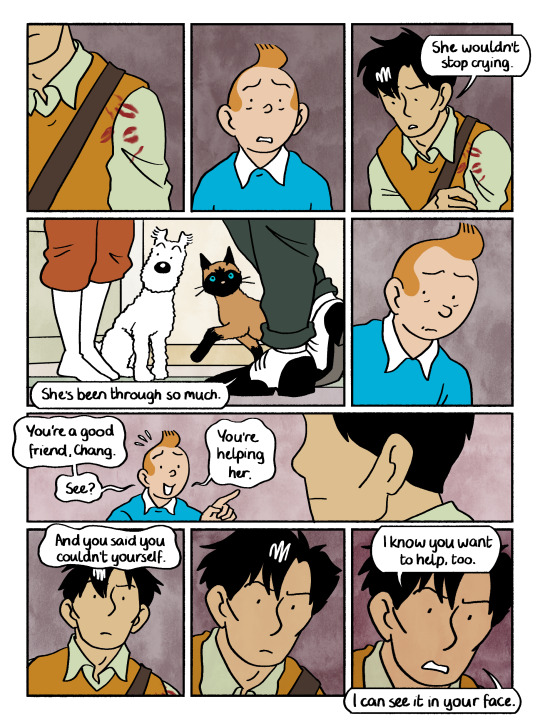#fracturing
Explore tagged Tumblr posts
Text
Today's emotion is: Fracturing

Today's emotion is Fracturing. Yeah... between dysphoria, lack of sleep, the uncertainty of whether I'm a system or not, if I'm even human anymore, the uncertainty of getting HRT, and a lot of other stuff that's giving me stress, I'm not in a great brain space.
#emotion of the day#today’s emotion#agender#trans#cw vent#nonbinary#tired#non binary#perpetually questioning#questioning self#uncertainty#fracturing#hrt#trans hrt#plant jackalope#jackalope#fursona#furry#furry art#personal vent#vent#venting
8 notes
·
View notes
Text
Tumblr is a great website if you want people to explain your own jokes to you
9K notes
·
View notes
Text

Eight of Swords
#dnd#dungeons and dragons#artists on tumblr#art#tarots#ocs#marsilio#kinda cheated with the eight swords thing as in you can barely see the eight one in the fractures fkgjdkfjd
5K notes
·
View notes
Text



Adam and his rizz idk what possessed me to draw this help bonus baps:

#cult of the lamb#cotl narinder#cotl au#cotl fanart#cult of the lamb the lamb#cotl narilamb#narilamb#fractured fates au#eggs and ham#tw: suggestive
6K notes
·
View notes
Text


#chainsaw man#chainsaw man part 2#chainsaw man 2#csm#csm2#csm part 2#csm 2#fujimoto tatsuki#tatsuki fujimoto#mitaka asa#asa mitaka#asa#denji hayakawa#denji#hayakawa denji#denji csm#manga#manga art#manga cap#monochromatic#black and white#fractured human
4K notes
·
View notes
Text





Arcane Fractured Jinx, Last Stand Ekko, Arcane Savior Viktor, Professor Heimerdinger & Arcane Vander Warwick Splash Art
#jinx#ekko#viktor#heimerdinger#warwick#arcane#arcane season 2#league of legends#arcane fractured jinx#arcane savior viktor#last stand ekko#professor heimerdinger#arcane vander warwick#vander warwick#league of legends skins#league of legends splash art#splash art#skins#official#1k#2k#3k#4k#5k#6k#7k
7K notes
·
View notes
Text

CHAT BIG BIG BIG NEWS
#hell followed with us#andrew joseph white#benji hfwu#hfwu#the spirit bares its teeth#compound fracture#ajw#hell followed with us movie
5K notes
·
View notes
Text






Small art dump
#roseart#south park#kyle broflovski#sp#mysterion#sp kyle#k2 south park#kenny mccormick#k2#south park k2#kyle and ike#ike broflovski#butters stotch#sp marjorine#the stick of truth#south park the fractured but whole#princess kenny#high jew elf king kyle#linda stotch#butters leopold stotch#marjorine stotch
4K notes
·
View notes
Text

Late for the actual day but I still cooked🙏🙏🙏
#art#artists on tumblr#artwork#digital art#digital illustration#my art#zombie#illustration#kenny mccormick#sp kenny#south park kenny#princess kenny#south park#south park fanart#the fractured but whole#stick of truth
2K notes
·
View notes
Text






more tfbw related drawings
#my art#south park#south park fanart#sp fanart#tweek tweak#craig tucker#stan marsh#sp creek#sp style#kyle brovlofski#south park the fractured but whole#tolkien black#kenny mccormick
2K notes
·
View notes
Text

Well Control for Completions and Interventions, Gulf Professional Publishing (5 April 2018) DM for Order sarasbooksonline.com Contact : +91-9958491228
#training#guide#regulation#readers#integrity#synopsis#fracturing#readinglist#bookshelfies#worldwide#century#components#sarasbooksonline
0 notes
Text




small comic I made mid storm last night
#cult of the lamb#cotl narinder#cotl au#cult of the lamb fanart#cotl the lamb#cotl fanart#narilamb#the gays#yes the lamb does like presenting as female sometimes#and they do love chocolate#and they are a little shit when it comes to chocolate#Narinder has to deal with them everyday#rip#fractured fates au
3K notes
·
View notes
Text

"too slow, mon vieux."
i'm so Normal about one pathetique french man and his animated-paintbrush qpr-slash-situationship and his qpr-slash-situationship's son and his giant "never kill yourself" plushie




#expedition 33#my art#i'm normal about this game stg#i was going to put françois but then i realised he wouldnt join them unless it's pre-fracture period :(#so noco it is#im crashing out so bad about this game#sandfall interactive!! i need a dlc of verso with his nonhuman found family :( please :(#clair obscur: expedition 33#clair obscur expedition 33#co:e33#coe33#clair obscur verso#verso expedition 33#expedition 33 verso#monoco expedition 33#expedition 33 monoco#esquie expedition 33#expedition 33 esquie#noco expedition 33#expedition 33 noco#vermono#monoverso
991 notes
·
View notes
Text




He just needed a bit of motivation.
From my story, The Fractured Urn. Previous part here!
#tintin#fanart#the adventures of tintin#comic#the fractured urn#chang#milou#snowy#tinchang#marlinspike cat#drawing tintin kissing is so weird lol#he's such a strange little guy
2K notes
·
View notes
Text

when the but is whole the fractured or smth idk i haven't played it yet
this one is also dedicated to my good ol canadian buddy chum pal @drawing-write (especially since stan is in the center)

also yeah i managed to restore this on my tablet 😔✨
IM FINALLY FREE FROM SCHOOL BC IT'S CHRISTMAS BREAK WOOOOOOOOOOOOOO
#south park#kenny mccormick#stan marsh#kyle broflovski#eric cartman#south park fanart#south park the fractured but whole#the fractured but whole#freedom pals#mysterion#toolshed#human kite#sp human kite#sp mysterion#sp toolshed#i won't tag cartman's superhero name sorry
3K notes
·
View notes